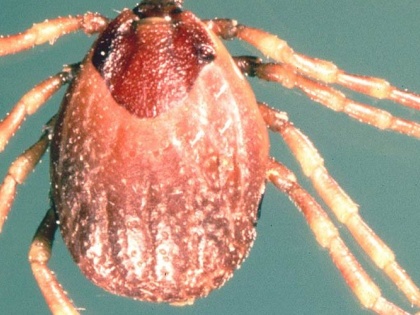Climate change to spur spread of tick-borne ‘deadly virus’ in UK: Report
By IANS | Published: July 10, 2023 11:00 PM2023-07-10T23:00:47+5:302023-07-11T00:13:24+5:30
London, July 10 The deadly Crimean-Congo haemorrhagic fever (CCHF) is soon set to spread to the UK, according ...

Climate change to spur spread of tick-borne ‘deadly virus’ in UK: Report
London, July 10 The deadly Crimean-Congo haemorrhagic fever (CCHF) is soon set to spread to the UK, according to a media report.
According to scientists, the disease spread through ticks is rapidly charging towards the UK due to climate change, the Mirror reported.
The World Health Organisation (WHO) said that CCHF has a mortality rate of up to 40 per cent and is difficult to prevent or treat as it spreads by ticks or animal tissue. It is also on the WHO’s list of ‘priority’ diseases, and it's found in eastern Europe and now France.
The CCHF also affected hundreds and caused deaths in Iraq and Pakistan. The virus was also found in Namibia and Spain.
The UK Parliament's Science, Innovation and Technology Committee revealed it was "highly likely" there could soon be cases in the UK.
An urgent health warning describes CCHF “as the current biggest threat to public health”, the report said. The virus' symptoms include headaches, high fever, back and joint pain, stomach ache, and vomiting. Red eyes, a flushed face, a red throat, and petechiae (red spots) on the palate are also common.
In severe cases, the WHO warns, jaundice, mood swings and sensory perception are encountered. As the illness progresses, large areas of severe bruising, severe nosebleeds, and uncontrolled bleeding at injection sites can be seen, beginning on about the fourth day of illness and lasting for about two weeks.
In documented outbreaks of CCHF, fatality rates in hospitalised patients ranged from nine per cent to as high as 50 per cent. The long-term effects of CCHF infection have not been studied well enough in survivors to determine whether or not specific complications exist. However, recovery is slow, the report said.
According to the WHO, human-to-human transmission can occur resulting from “close contact with the blood, secretions, organs or other bodily fluids of infected persons”. There is currently no vaccine available for either people or animals infected by the disease.
Disclaimer: This post has been auto-published from an agency feed without any modifications to the text and has not been reviewed by an editor
Open in app